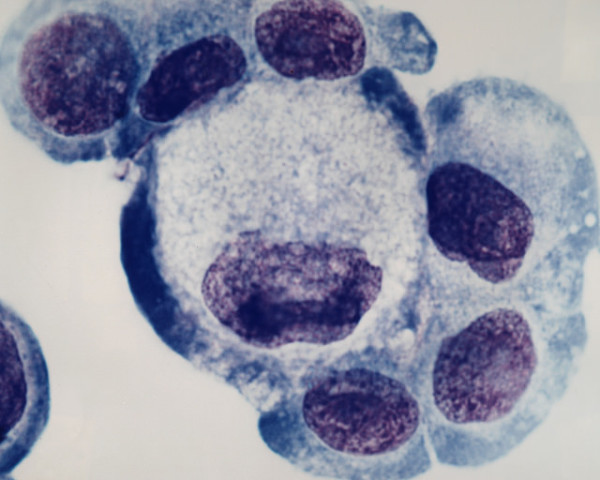Cancer is a major burden to populations around the world. While there are well over a hundred different types of cancer, affecting various tissues and organs, all cancers share certain characteristics known as hallmarks. These hallmarks allow scientists to distinguish between cancer cells and normal cells, and they feature the manipulation of two types of genes: oncogenes and tumor suppressor genes. Oncogenes generally promote cell growth, whereas tumor suppressor genes limit cell growth. As a result, activation of oncogenes and inactivation of tumor suppressor genes can lead to cancer. Understanding the mechanisms behind these genetic changes is essential to developing cancer treatments, and a recent study has discovered how a protein associated with DNA repair is involved in the inactivation of tumor suppressor genes, which is a step towards cancer.
Image Source: theasis
Researchers have found that a protein called CHD4 may promote cancer by inactivating tumor suppressor genes. The researchers first sought to better understand the role of this protein by inducing DNA damage in human colon cancer cells. To do so, they exposed the cells to either hydrogen peroxide or laser beams and found that CHD4 had a strong presence at sites of DNA damage along with other proteins that function to silence the damaged sites. Interestingly, when the gene encoding CHD4 was knocked out, the recruitment of DNA repair proteins following DNA damage was inhibited, and the tumor suppressor genes involved were no longer inactivated. This suggests that cancer cells may take advantage of the DNA repair mechanism associated with CHD4 to silence tumor suppressor genes and promote tumor growth.
The researchers further elucidated how CHD4 functions by showing that it is recruited by an enzyme called OGG1, which serves to remove mutated guanines. They found that in the absence of OGG1, CHD4 was no longer found at DNA damage sites. To ultimately support the idea that CHD4 plays an important role in cancer progression, the researchers genetically modified colon cancer cells so that they were unable to produce CHD4 and found that these cells no longer expressed essential hallmarks of cancer.
The results of this study suggest that CHD4 may be a potential therapeutic target for cancer treatment and that the presence of OGG1 may be used to predict cancer risk. Although the experiments were done on colon cancer, the researchers believe that their findings can likely be applied to other types of cancers as well.
Featured Image Source: U.S. Department of Energy










